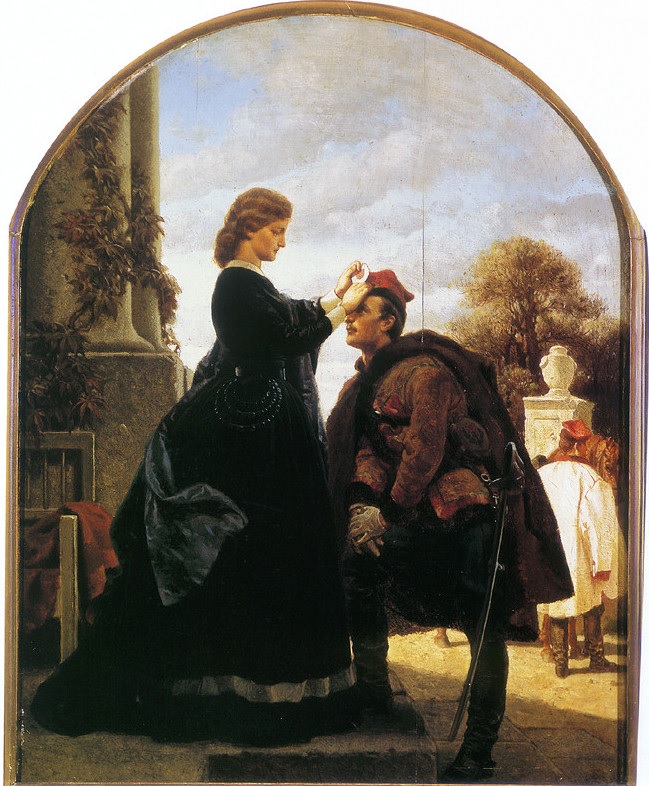Polish scholars of the January Uprising have noted that the anti-Russian January Uprising (1863) began with black dresses and ended with them. Polish women wore black dresses and patriotic jewellery in large numbers to protest tsarist policies. Wearing them required courage, as black dresses were punishable by fines and even other more radical measures as found inappropriate in the opinion of the partitioning authorities.
In February 1861, a patriotic demonstration held in Warsaw was bloodily suppressed by the Russian authorities. In response to those events, Polish women began to appear en masse in churches dressed in black, praying for the souls of the fallen. This attitude did not escape the attention of the Russian authorities, who issued a ban on the wearing of mourning clothes. However, circumventing the order proved very easy, as Archbishop Antoni Melchior Fijałkowski declared national mourning. It also soon became apparent that the black dresses worn by the ladies in Warsaw had become a fashion hit first in London and then in Paris. This was probably the only case of the dictates of Polish fashion accepted by Paris. This made it more difficult to distinguish between an ordinary fashionista and a patriot.
The tragic political situation that Poland faced under the Russian partition, the outbreak of the January Uprising and its failure, strengthened the conviction in Polish women of the need to manifest their attachment to Polishness with their black clothes. Some of them even got married in black dresses.
As the protest persisted for years, the authorities of the Kingdom of Poland finally decided to put an end to the fashion manifestation. In 1863, fines were introduced for black dresses, and tsarist agents lurking in the streets tore apart black crinolines with special hooks. These actions caused women to switch to grey dresses, but they were also banned. Brown dresses were banned as well, and sometimes women dressed in green were also fined. It was believed that green was the colour of hope, so surely that colour was chosen not by chance….
In the end, the penal sanctions proved effective, nevertheless the fashion of the time, together with the patriotic jewellery appearing en masse, became an indispensable element of Polish culture. More extensively, the subject of so-called black jewellery is presented in a beautifully edited publication by Wojciech Postuła. Some of the most valuable jewellery collections are kept in the Cistercian Museum in Wąchock.





